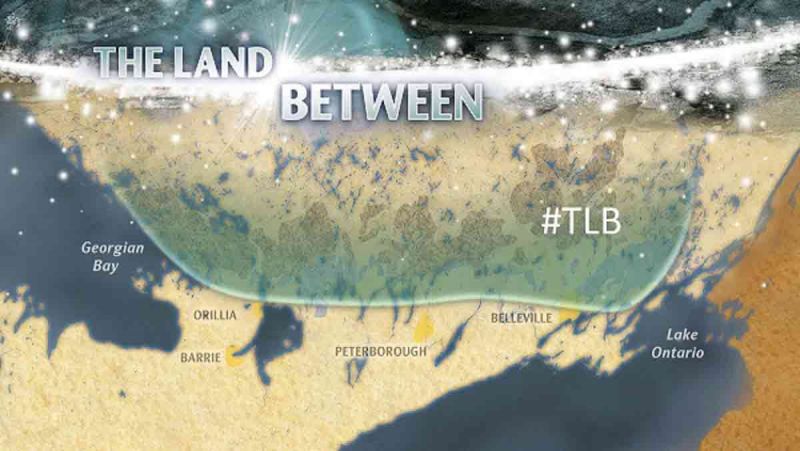Jeff Green | Sep 27, 2019
The Land Between, a not for profit environmental organisation, has received a grant from Environment Canada, one of only 15 across Canada, under the Community-Nominated Priority Places program.
Canada is working closely with provinces and territories, Indigenous Peoples, and other partners on a new approach to species conservation. Through partnership, we will achieve long-lasting and sustainable protection and recovery of species at risk.
In each community, multiple partners will take action together to protect and recover species at risk. These projects will complement ongoing species at risk conservation in 11 priority places already identified by federal, provincial, and territorial governments.
One of the projects under the Community-Nominated Priority Places program targets The Land Between bioregion, which covers almost 3 million hectares, from Georgian Bay to the Ottawa Valley. This project (in collaboration with 10 partners) is expected to benefit 57 species at risk, including the little brown bat, the eastern (Algonquin) wolf, and the golden-winged warbler. Details on other projects will be released over the coming months, as agreements with local partners are finalized.
“As a grassroots and non-government charity, we are very honoured to be awarded this capacity. We take this opportunity seriously and will work to ensure it translates into meaningful solutions and protection of our natural capital-wildlife and biodiversity to benefit all,” said Leora. “We will be using agile, innovative mapping and integrative and strategic planning, but equally importantly, we will use a collaborative and community approach to achieve many of our goals under this grant, working directly with landowners for all species, but especially when it comes to Algonquin Wolf.”
Leora has expressed that both herself, and her Board of Directors which is made up of local landowners, seasonal cottage owners, and First Nations, have trepidations over the approach taken within the Algonquin Wolf Recovery strategy.
“We have concerns that the research is perhaps limited in scope, and that it has not included enough local knowledge. There are outstanding questions. It does not seem to sufficiently explore the behavior, biology and impact of the hybrid species, the coy-wolf.”
Leora goes on to explain that she has heard many concerns expressed by hunters and trappers throughout the region and even to the north, that the hybrid coy-wolf may be negatively affecting beaver populations and other food sources, on which wolves depend. And this may be significant because, if true, the coy-wolf may not only impact wolves in this way but wildlife species at all levels of the food chain. Leora says she has also heard many other incongruous accounts that need to be heeded and concerns even over wetland habitat in general that need to be considered.
“We would like to get a picture of what is happening on the landscape from those that live on the landscape and then we can compare notes with the science that has been conducted.”
The Land Between will therefore be calling for and convening local “Talking Circles” to focus on the wolf issue. Talking Circles are an ancient and democratic way of dialogue and decision-making that ensures that everyone has a chance to be heard. Talking Circles have been used effectively by the charity in past projects to understand the state of the resource across the region, and according to Leora, they are needed more and more;.
“Community meetings, public engagement, and listening to local knowledge seem to be falling by the wayside in our modern and fast-paced arenas,” she said.
These circle-meetings will be held across the region for landowners to share accounts of what they are witnessing on the land.
“Most biologists that we have consulted with recognize that the largest limiting factor for an apex predator such as the wolf is habitat. Therefore, we need to explore all facets of that equation in moving forward with any meaningful actions.”
In addition to strategic mapping, planning, and “wolf-circles”, Leora says that landowners can expect opportunities to emerge from the effort including ways in which people can become involved in Citizen Science or habitat management, from turtle road surveys, to bird bio-blitzes, angler diaries and invasive species control teams.
She also says to expect some direct support in the form of site visits as well as habitat monitoring, stewardship and restoration plans for individual landowners. Berman expresses however, the need for patience because, “there is a ton of work to do and in a very little time!” The Federal grant extends until March 2021.
To find out more or contact The Land Between charity, visit www.thelandbetween.ca or email Leora at This email address is being protected from spambots. You need JavaScript enabled to view it.
More Stories
- Kaladar Station - Sometimes the timing is just right
- 50th Anniversary Party for Rural Frontenac Community Services
- Bioblitz Coming This Week at Piccadilly Property
- Committee recommends looking at an accommodation tax in Frontenac County
- Bobs and Crow Lake Shoreline Restoration
- Ellen Fraser is recognized as the winner of the 2025 MERA Award of Excellence in Fine Art and Fine Craft.
- Addington Highlands Treads Lightly Into F Carney Flag Debate Territory
- Simonett Purchase Raises Questions
- Why This Green Could Not Vote Red
- The Sand Is Still Coloured

